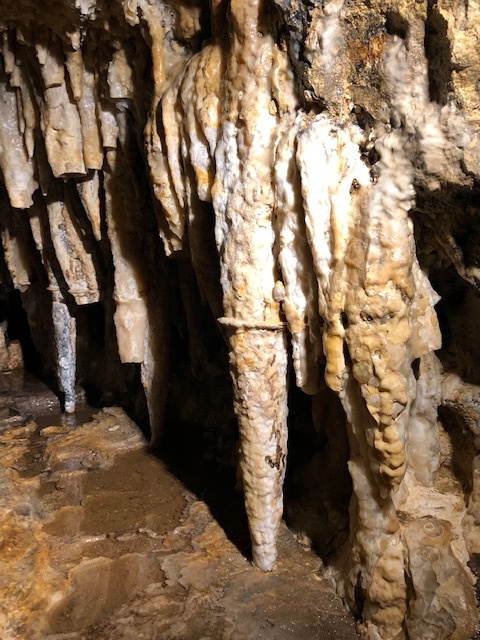Driftless Caves / Geological Wonders
The natural cave systems found in the Driftless area are hundreds of millions of years old. At one time this region was covered by a shallow sea and hold fossils of sea creatures common to this area in the distant past. The melting water escaping from the shrinking glaciers ran both above and below ground of this unglaciated region as it flowed to the Gulf of Mexico.
The subterranean geologic layers are made up of many different materials. Each layer reacted differently to the running water and minerals that were present in those places. The caves are an open book to the past when dinosaurs roamed the earth.
There are four known caves that can be visited in the Driftless region of Wisconsin. They are worth experiencing in person.
Eagle Cave
Eagle Cave is located near Blue River, Wisconsin, in Richland County, Wisconsin. It is known as Wisconsin's largest onyx cave. Eagle Cave was the first cave to be commercially owned and operated in Wisconsin. The cave was discovered in 1849 and opened to the general public in 1938. More information on Eagle Cave can be found at http://www.eaglecave.net/.
Crystal Cave
Crystal Cave located in Pierce County, Wisconsin near the Town of Spring Valley. The cave was discovered in 1881 by George and William Vanasse. Crystal Cave is a multi-level cave formed in dolomite bedrock in the “Prairie du Chien Group.” More information on Crystal Cave can be found at http://www.acoolcave.org/.
Kickapoo Indian Caverns
Kickapoo Indian Caverns includes one of Wisconsin's longest natural limestone cavern systems. This cavern is the winter shelter for three species of threatened bats. These caverns are located in Crawford County in Wauzeka. More information on the Kickapoo Indian Caverns can be found at https://www.mississippivalleyconservancy.org/land-protection/kickapoo-caverns.
Cave of the Mounds
Cave of the Mounds, a natural limestone cave located in the Dane County near Blue Mounds, Wisconsin. This cave was discovered by accident in 1939. Its natural beauty derives from its many varieties of mineral formations. More information on the Cave of the Mounds can be found at https://www.caveofthemounds.com/.







